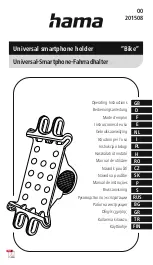
Page 42 of 69
Stabilizer Jacks
Your vehicle may be equipped with stabilizer jack systems, which are used to level your trailer
and to keep it from swaying when parked for camping. Stabilizer jacks are not designed as
lifting systems for service access under the trailer. Placement of ANSI approved jack stands
under the trailer is necessary prior to entering the underside of any recreational vehicle for
service. Due to the varying options contained in stabilizer jack systems, it is recommended that
you read the operation manual included with the system installed on your trailer for proper
operation procedures.
It is recommended by Bigfoot that you have the stabilizers in place before
extending or retracting the slide-out, which means levelling the trailer first.
Solar Panel
Your travel trailer may be equipped with a solar charger. The solar charging panel installed on
the roof of your travel trailer is designed to “trickle charge” the batteries. It is not intended to be
a fast charger. It also cannot supply large amounts of current to operate 12V DC electrical
equipment. When the sky is clear and under bright sun, the solar panel will keep your batteries
“topped up”. Do not try to operate the 12V DC appliances with the output of the solar panel.
Please consult the specific owner’s manual for operating instructions.
Television(s)
Your unit may be equipped with 1 or more televisions inside the travel trailer and/or a television
in an exterior entertainment centre. Please consult the specific owner’s manual for operating
instructions.
Hidden TV Antenna
Our travel trailers are equipped with a hidden television antenna that is built into the roof
structure of the coach. It is connected to a power amplifier with a series of wires. This antenna
is a non-directional antenna. Therefore for best reception, avoid any obstructions above the
travel trailer that may cause interference with the TV reception.
LP GAS
Liquefied Petroleum gas, often referred to as propane, is a material compound of various
hydrocarbons such as propane, propylene, butanes, butylenes or a mixture of them. It is stored in
the tanks as liquid under high pressure and vaporizes into a gaseous fuel under the control of a
pressure regulator, which reduces pressure to about 6.5 ounces per square inch. This low-
pressure LP vapour is then transferred through the gas distribution lines for the use of heat
producing appliances such as the furnace, range, water heater and refrigerator.
LP gas burns readily and yields a tremendous amount of heat energy. Under proper conditions
and careful handling it is safe, economical and ideally suited for use where conventional fuels are
not easily utilized. A strong odour similar to sulphur has been added to the gas for safety. Both
propane and butane gases are heavier than air and when released flow downwards and tend to fill
depressions. Both diffuse and dissipate quickly if adequate ventilation is provided to allow a
downward flow.
CAUTION!
THIS GAS PIPING SYSTEM IS DESIGNED FOR USE WITH LP GAS ONLY! DO
NOT CONNECT NATURAL GAS TO THIS SYSTEM!
Securely cap inlet when not connected for use. After turning on gas, except after normal
cylinder replacement, test gas piping and connections to appliances for leakage with soapy
water or bubble solution. Do not use products that contain ammonia or chlorine.
Содержание T2801
Страница 2: ...BIGFOOT TRAILER MANUAL DRAFT 8 APRIL 3 2008 ...
Страница 36: ...Page 34 of 69 ...
















































